Home \ Project News \ Popular Science Lecture: Climate Change and Biodiversity
Author: Le Hongyu, the promoter of Low-carbon project
On November 17, 2020, at the invitation of the EUEuropean Union-Humana People to People’s Yunnan Low-carbon Schools Pilot Project, Professor Geng Yupeng from the Sschool of Ecology and Environment of Yunnan University gave a lively and interesting lecture on "Climate Change and Biodiversity" to the grade-one students in The Affiliated Middle School Of Kunming University of Science and Technology (KUST)ust. He Jinyu, the executive principal of this school, and Wang Hui, the vice principal, also participated in the lecture.
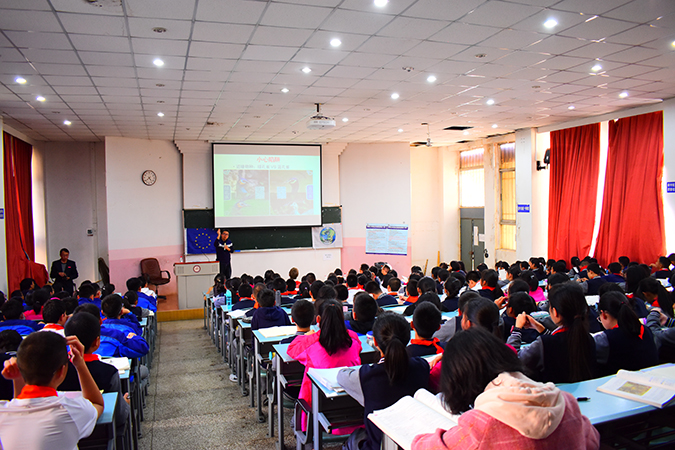
"At present, global warming is taking an adverse effect to our normal life. For dealing with the crisis caused by climate change, we need to constantly deepen our understanding of climate change and actively respond to global climate change. The implementation of the EUuropean Union-Humana People to People’s Yunnan Low-carbon Schools Pilot Project, aims at mobilizing the majority of young people to build the green and low-carbon campus, jointly handle the climate change, and protect the homeland we live by. " Before Professor Geng's lecture, Siri HolmebakkHuo Sirui, the Office Manager leader for the of HPP Llow carbon schools project, introduced the background, objectives and significance of this project.
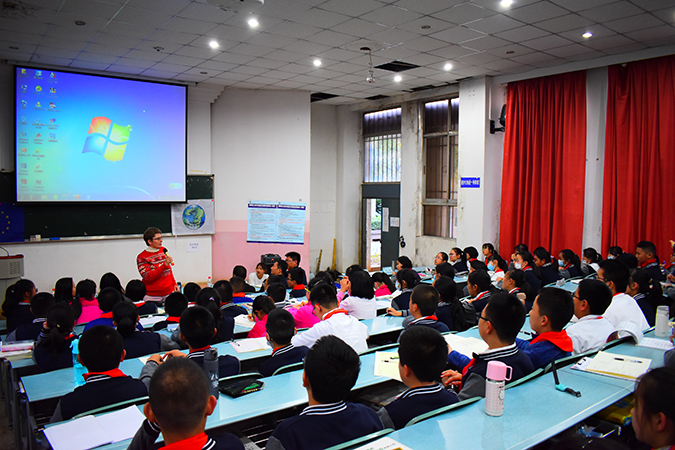
Then, Professor Geng kicked off the lecture on the topic that the 15th Conference of the Parties (COP15) to the Convention on Biological Diversity (CBD) will be held in Kunming, Yunnan Province in 2021, with the theme of "Ecological Civilization: Building a Shared Future for All Life on Earth".
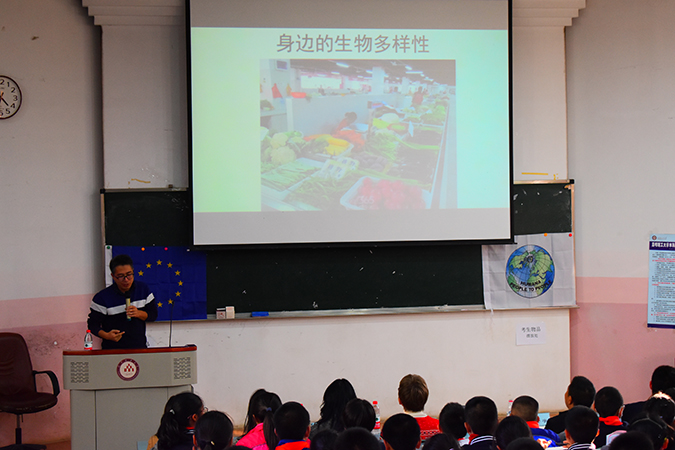
Known as the "Kkingdom of animals and plants", Yunnan ranks first in biodiversity and is one of the 17 key biodiversity areas in China, and one of the 34 biodiversity hotspots in the world, which is also an important biodiversity treasure house and ecological security barrier in Southwest China.
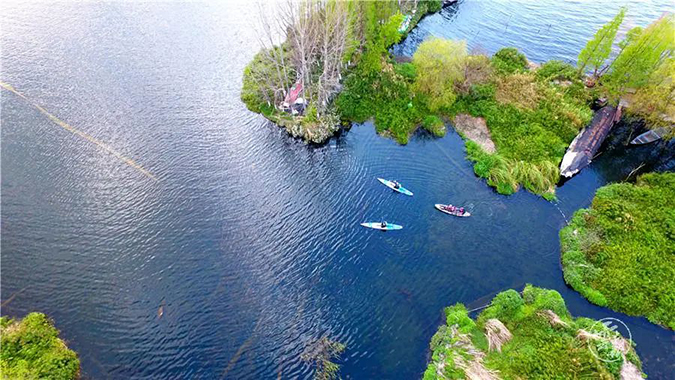
Dianchi Lake (photo from Internet)
In response to the students' curiosity and doubts, Professor Geng focused on three aspects: what biodiversity is, why we should protect biodiversity, and the relationship between climate change and biodiversity.
What is biodiversity?
The vegetables and other various foods we eat every day, the countless animals and plants in the zoo and botanical gardens, and the tens of thousands of microbes in our hands are all part of the biosphere, which together constitute biodiversity.
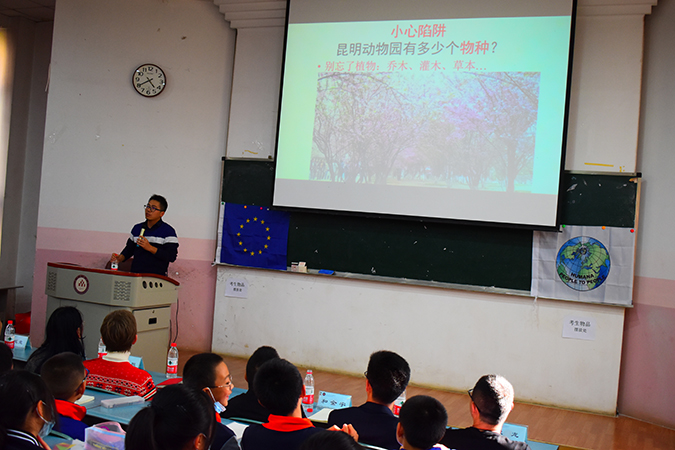
Why should we protect biodiversity?
As for why biodiversity should be protected, Professor Geng gave three reasons: every species is not an island with its own potential value, and the current rate of biological extinction is far beyond normal.
Each species must have its value. For instance, Leech can suck blood, but hirudin has anticoagulant effect. So it has a great effect on the treatment of postoperative congestion. In fact, there is a close relationship between fish in the water and birds in the sky. If one of the creatures vanished, the other would be affected. In addition, we are experiencing the sixth mass extinction. The rate of species extinction caused by human beings is 10-1000 times faster than that in geological history. It is estimated that on average, three species disappear permanently every hour.
When Professor Geng said that "three species may die out permanently during the period of our lecture", the students were shocked!
Impacts of global warming on Biodiversity
With the continuous development of society, carbon dioxide, methane and other greenhouse gases emitted by human activities further accelerate climate change. Global warming not only leads to temperature rise, glacier melting, frequent extreme weather, but also affects biodiversity.
Professor Geng deepened students' understanding by telling "when peach blossoms bloom and when insects pollinate". If you confuse why the peach blossom blooms ahead of time, the reason is probably climate change. Coral bleaching, the great extinction of amphibians caused by the infection of Ranunculus ranunculatus, drought and even desertification in alpine regions, polar bears' survival crisis due to melting of Arctic Glacier......all of which are the impacts of climate change on biodiversity. In order to protect the biodiversity of the earth, there are two main methods: in-situ conservation and ex-situ conservation.
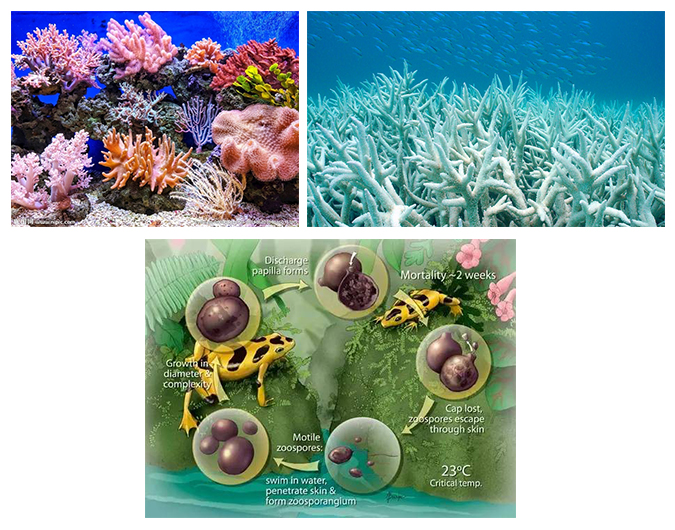
(The above pictures are from the Internet)
The Q & A part
After the lecture on "Climate Change and Biodiversity", it was time to test the students!
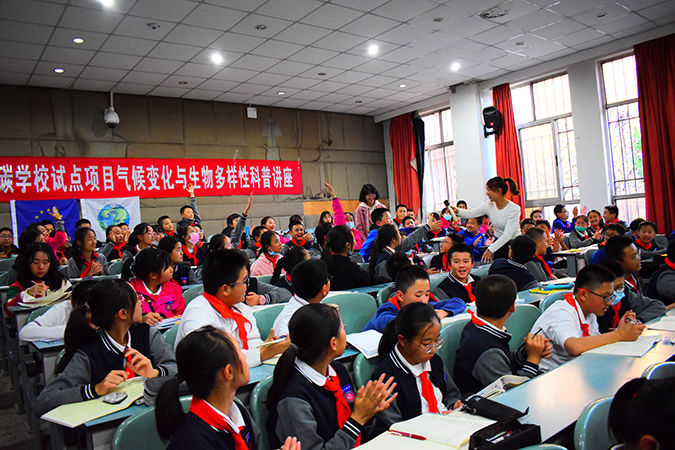
"How many kinds of insects are there on earth now?", "Will the earth itself drain carbonx dioxide into the universe when it enters the atmosphere?", "Can we clone some endangered species?", "Is it possible to preserve the embryo of an organism and reproduce it when it becomes extinct?", "Will future organisms evolve to be immune to garbage?"......The students began to brainstorm and explored the truth behind the problems with Professor Geng.
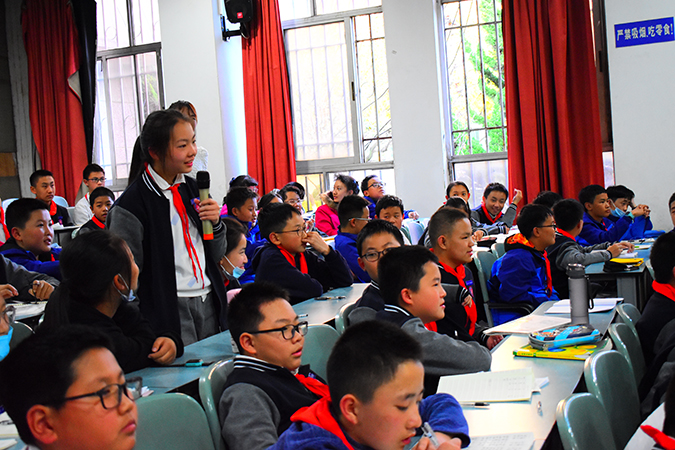
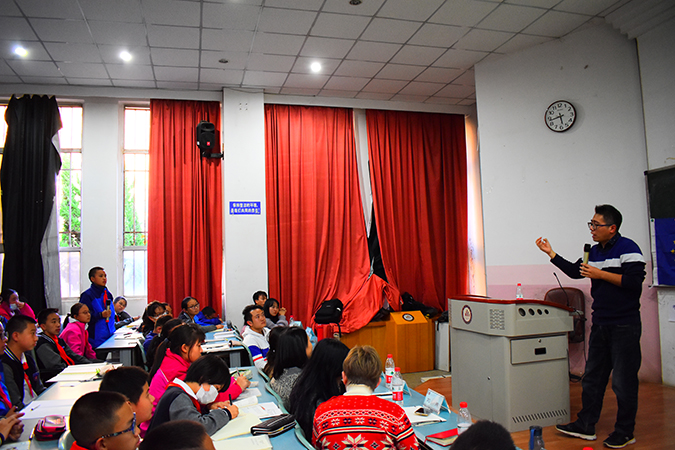
Heated as the discussion, no matter what the answers are, the future of mankind depends on how we act now!
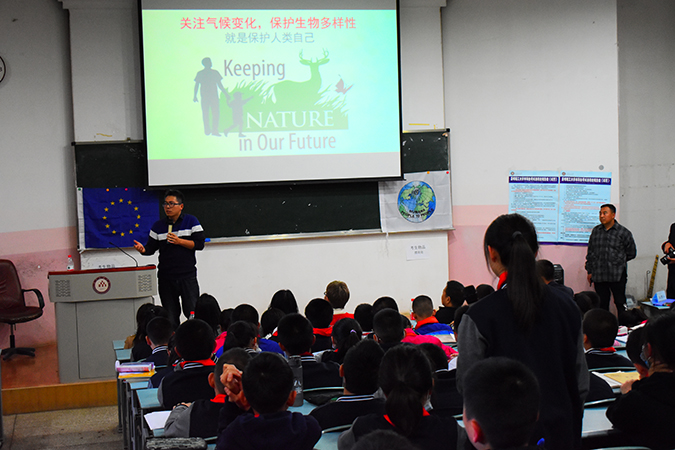
To care about climate change and protect biodiversity is to protect ourselves!
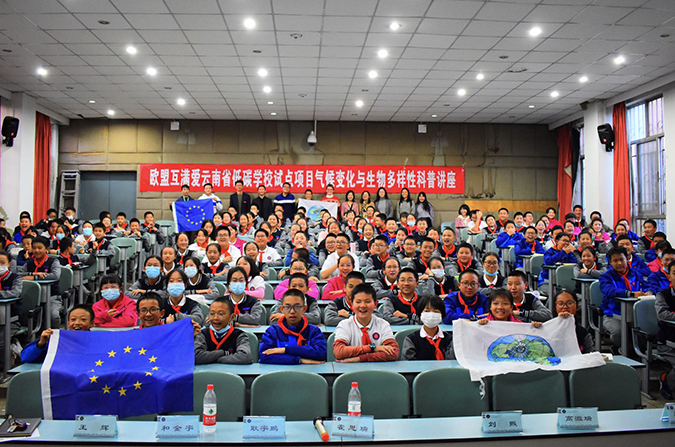
Project introduction:
Co-funded by the European Union and the People to People Foundation (Spanish member of HPP), the Yunnan Low-carbon Schools Pilot Project is implemented in cooperation with the International Humana People to People Movement (Switzerland) Yunnan Representative Office, Yunnan Academy for Science and Technical Information, Southwest Forestry University and Chinese Youth Climate Action Network, with a project cycle from January 1, 2020 to December 31, 2023. The project begins by increasing partners’ awareness and advocacy on climate change mitigation and environmental protection, by raising climate change awareness among 600 schools, 70,000 students and teachers, determine the emission benchmark through basic calculation, and then implement emission reduction work. Use science, technology, innovation and other means to respond to “climate action” to accelerate environmental sustainability and promote the transition from green campuses to low-carbon and carbon-neutral campuses.


This project is supported by the European Union and the People to People Foundation (Spanish member of HPP).
The article only represents the author’s personal views, and is not related to the funder.